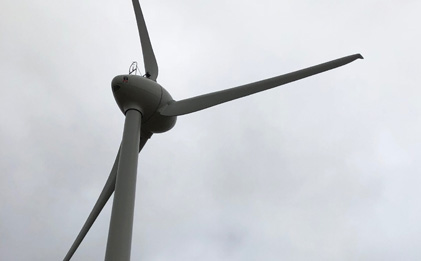Summary
Sustainably integrating wind and solar power into the national electricity grid requires precise forecasting of power output from wind and solar farms.
Traditional forecasting techniques use combinations of naive and Numerical Weather Prediction (NWP) methods for power forecasts. An alternative approach is to utilise Machine Learning (ML) models, trained on historical time series data.
Key results
Advisian deployed two machine learning models at the 130 MW Waterloo Wind Farm in South Australia and the 116 MW Ross River Solar Farm in Queensland. The dual machine learning models were able to improve upon benchmark forecasts and showed major benefits when the wind farms had constraints applied by AEMO.
Learn more
How the project works
This power generation forecasting project aims to provide semi-scheduled wind and solar power generators with more accurate and reliable five-minute ahead self-forecasting tools.
The project will be led by Advisian Digital with support from Monash University Information Technology department and in collaboration with Palisade Energy.
Area of innovation
Advisian Digital will employ a spatio-temporal ML prediction framework that considers cross-series information (within a farm), lagged variables and external variables such as wind speed/solar irradiance and forecasts.. A sparse vector autoregressive framework will be able to handle many wind turbines, solar panels and farms and both linear (VAR) and non-linear ML regression methods (support vector regression, random forests, gradient-boosted trees, (recurrent) neural networks etc.) can be incorporated into the framework in an ensemble approach. Bayesian methods will be used to analyse and produce measures of reliability among the different regressors in the ensemble in the self-forecast. In this way we will be able to dynamically adapt the ensemble. Anomaly detection methods will be used on the input data to monitor input data quality and individual-level noise.
Model development, training and testing shall be performed in the Cloud to reduce training time and provide a platform to transition to piloting earlier. Developed models will be deployed to each site’s Internet of Things Edge Gateway device, a physical computing machine capable of ingesting SCADA sensor data and running trained ML models locally thereby minimising latency.
Benefit
By improving the accuracy of five-minute look ahead forecasts into the National Electricity Market (NEM) our power generation forecasting solution could enable the delivery of more secure and reliable electricity to the grid. This could reduce frequency fluctuations caused by poor dispatch thereby supporting a move towards a higher share of renewables in the NEM without compromising overall grid stability.
Accurate forecasting of wind and solar energy is the main focus area with the benefits anticipated to be:
- increased renewable energy penetration on the network due to improved dispatchability of renewable generation,
- reduction in Frequency Control Ancillary Services (FCAS) payments by generators resulting from the failure to meet dispatch targets,
- increased network capacity with operating margins more accurately defined and controlled,
- deferment of network expenditure resulting in significant capital expenditure cost reductions.
Additional impact
Advisian Digital long term see the the potential of its forecasting solutions to provide value through operational services to renewable energy asset owners and developers. This will immediately result in the establishment of a new business line within Advisian Digital to provide these services to customers in Australia.
The research and development of these models is expected to add to the overall body of knowledge around the application of machine learning technologies to wind and solar forecasting, which will be made available through the publication of results and papers prepared by its academic partners at Monash University.







